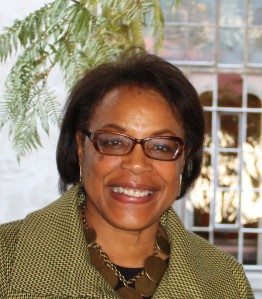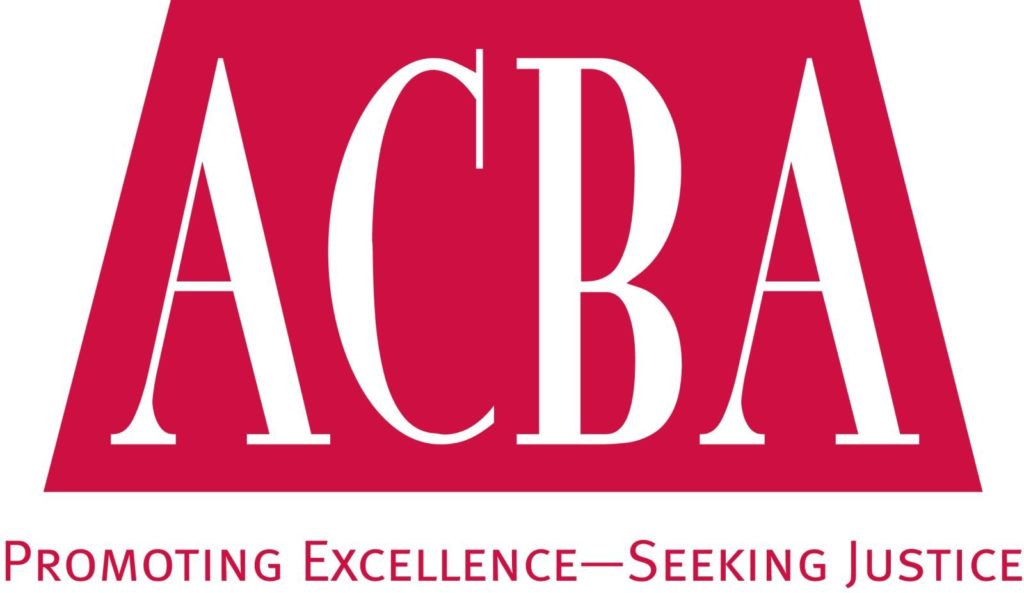 Judge Winifred Smith is the Presiding Judge of the Superior Court of California, County of Alameda, for a two year term that started in January of 2014. She was appointed by Governor Gray Davis in November 2000, and prior to her appointment, served as deputy assistant attorney general for the Department of Justice in San Francisco.
Judge Winifred Smith is the Presiding Judge of the Superior Court of California, County of Alameda, for a two year term that started in January of 2014. She was appointed by Governor Gray Davis in November 2000, and prior to her appointment, served as deputy assistant attorney general for the Department of Justice in San Francisco.
Recently, ACBA President-Elect Toni Mims-Cochran sat down with Judge Smith to get some insight on her first year as Presiding Judge.
What has been your biggest challenge as Presiding Judge?
The biggest challenge has been the budget. My assignment started in the middle of the budget cycle. The budget situation for the Superior Court of California, County of Alameda has been particularly bad for the past five years, and this year could have been even more difficult if the economy had not improved.
As you may know, Governor Brown imposed a “spend down” requirement, which allows us to maintain only two percent of our reserves. Anything more reverts to the General Fund. Before the implementation of this requirement, the Court could maintain more reserves and had more discretion in how they were allocated. We are working hard to spend every dollar we have responsibly.
While money may be the biggest challenge, I have enjoyed working with the new Court Executive Officer and executive team in addressing this challenge. Leah Wilson came on as CEO in April, and as the court evolves, we are working together to redefine our roles.
How did you prepare to be Presiding Judge?
In order to prepare for the role of Presiding Judge, starting in 2011 I became involved in several macro committees. This helped me prepare to think about the big picture. I had a pretty good idea of what I was getting into because through these macro committees I was able to work with my immediate predecessor, Judge C. Don Clay, who was a great mentor. I felt like I had a good handle of what was going on when I took over. All the past PJ’s are a great resource and available to assist.
What does an average day look like for you?
We have a meeting every Monday morning to discuss what issues need to be addressed, orders need to be signed, committees of the court need attention from the PJ, etc. Some of the big projects, for example the East County Hall of Justice and a new computer system, always require attention. Of course, I have to work on assignments and changing schedules for judges and commissioners and all that entails. I spend a fair amount of time on the phone. On Thursdays, I have an Ex Parte Calendar. Fridays, a Master Trial Calendar—mostly unlawful detainers.
There is potential for something different to happen every day—you never know what will walk through your door on a given day.
There have been several changes at the Court this year. What do you consider the most significant?
In the last year, there have been many significant changes, including: the executive staff has been completely reorganized; we are in the process of purchasing an integrated case management system; and we broke ground on the East County Hall of Justice (which was 15 years in the making). Recently, we had our first ever all court employee (1,500 employees) meeting and training, including a keynote address by Congresswoman Barbara Lee, which was a huge success. The Governor directed local courts to do what they can to maximize revenue; as a result, new fees were implemented. Starting October 1, customer service hours for the Civil Division were extended from 2:30 p.m. until 4:30 p.m. on a piloted basis, which is a positive step in terms of trying to increase access to justice.
Can you tell us a little bit about the Bench Bar Coalition?
We are trying to lobby for more money for the courts with other collaborative groups. I belong to PJ’s advisory committee and the legislative outreach committee, we make recommendations to the Judicial council on a statewide level.
How do you achieve work life balance as PJ? Or, do you?
It’s different. I haven’t made extraordinary changes, you just adjust. The first six months was heavy, between learning the PJ role and various bar engagements, speaking engagements, community outreach, that sort of thing. The PJ does a lot of outreach on behalf of the court. But, I feel I have a better handle on things now.
What do you hope to accomplish in your last year as PJ?
More of the same—trying to stay on top of the issues, do more innovative things, adjust to the new normal (a leaner and meaner machine), support judicial officers, and provide access to justice. It’s a continuum. You are a steward of the office and you want to do good things. Things shift and change, the goal is to meet challenges head on and deal with them. I will do whatever it takes to ensure the people of Alameda County have access to the justice system.
One last thing…
I have to say I have enjoyed the support of the ACBA and local specialty bars. The bench and bar work well together in this community and that is a good thing. I look forward to continuing those relationships.
